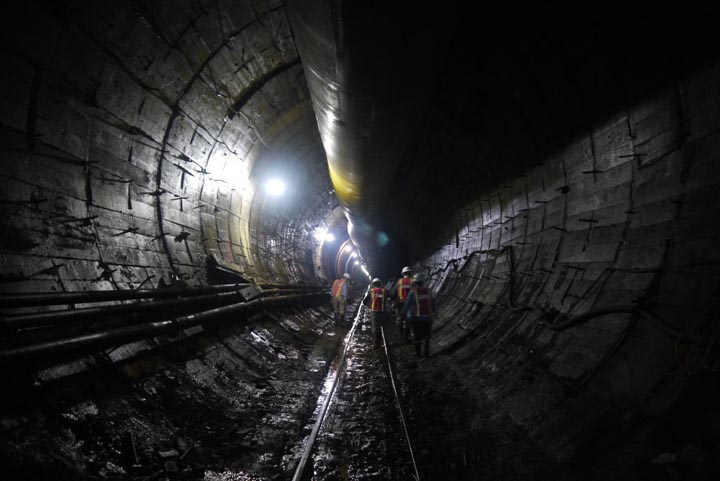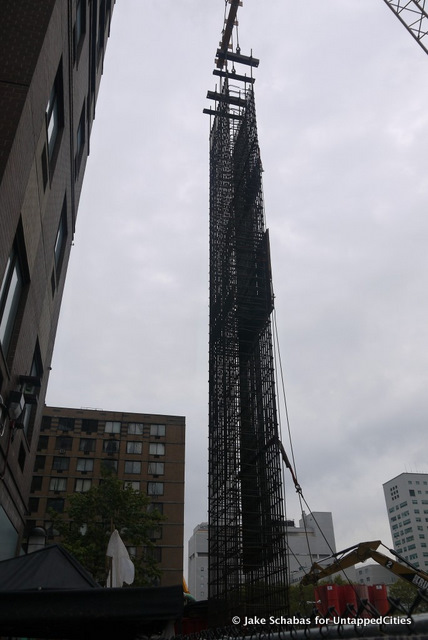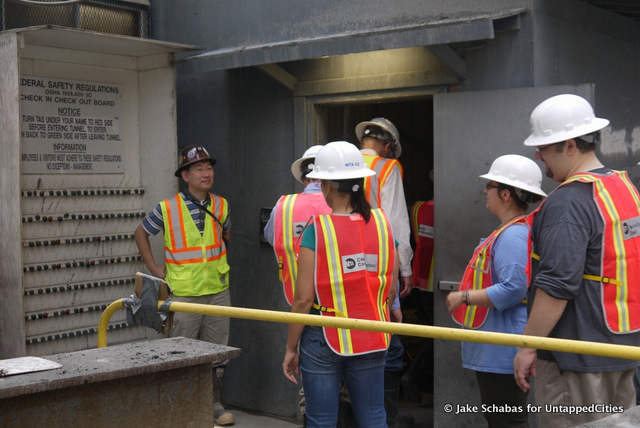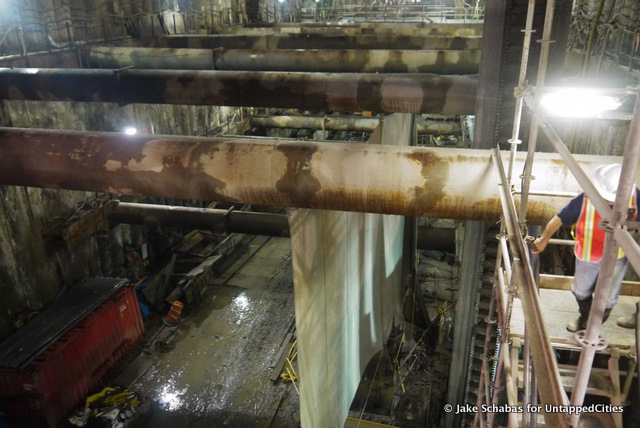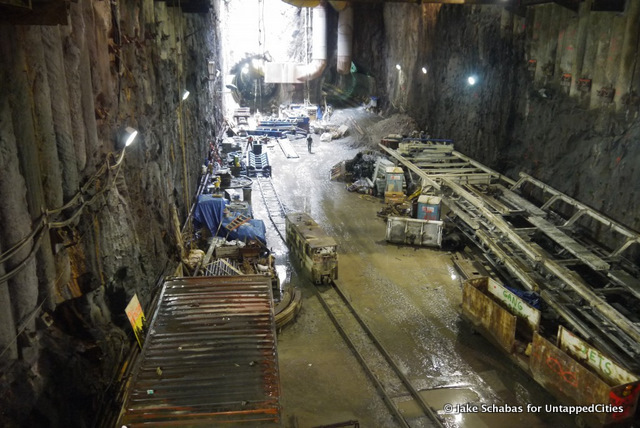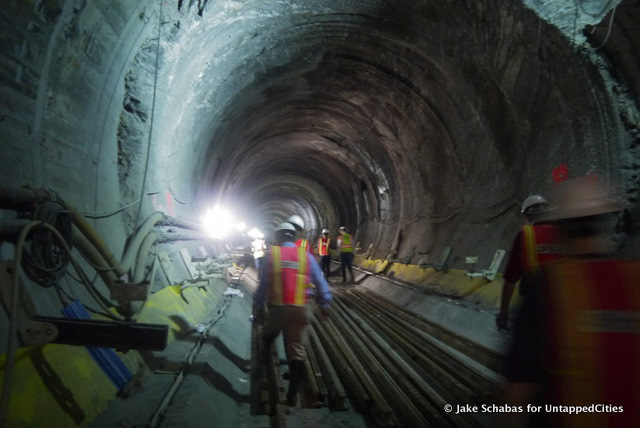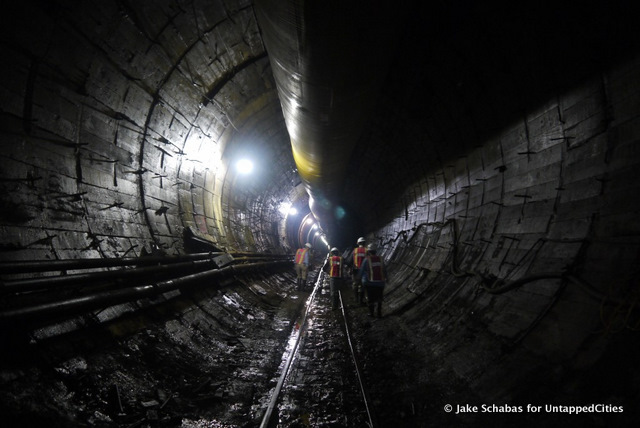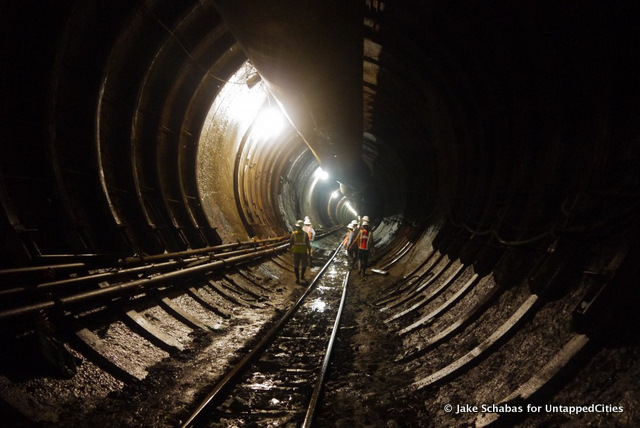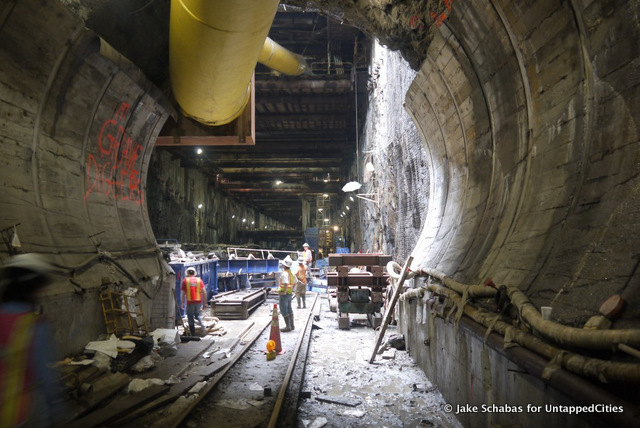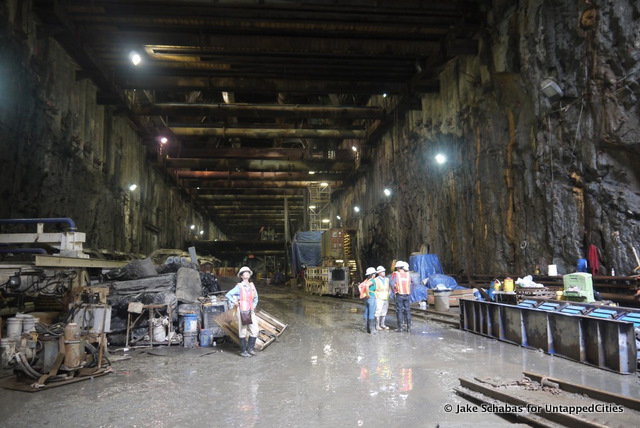Over the next week, Untapped New York will be publishing a series on the MTA’s three megaprojects: the Second Avenue Subway, 7 Line Extension and East Side Access construction projects.
____________________________________________________________________________________________
Few subway lines have a mythology to them like the 2nd Avenue Subway. The A Train has a jazz standard, the 7 Line has the ‘International Express’ nickname for passing through so many ethnic communities, but no subway line has so storied a history before even going into service.
First proposed in 1929, the line was meant to replace the 2nd Avenue and 3rd Avenue Elevated lines that were eventually torn down in 1942 and 1956. First delayed by the Great Depression and World War II, construction actually began in 1972 at 103rd Street and 2nd Avenue only to be stopped again by the city’s fiscal crisis 1975.
With the 2nd and 3rd Ave Els gone, this left the Lexington 4/5/6 line as the only subway serving Manhattan’s Upper East Side, which had been upzoned in the 1960s in anticipation of a second subway serving the area. Today, the line carries 1.3 million riders a day, the daily ridership of of the subway systems in Boston, Chicago and San Francisco combined.
In April 2007, MTA restarted construction on “Phase One” of the 2nd Ave Subway: between 96th Street and 63rd Street. With all tunnel work for Phase One wrapping up just last week, we got a chance to go down inside the 96th Street Station site and adjacent tunnels to the south. Currently, the 2nd Ave Subway is one of only three subway projects under construction in the United States and Canada (not counting light rail), the other two being the #7 Line Extension in West Midtown and the Spadina Subway Extension in Toronto.
As we walked over to the entrance, our MTA Capital Construction guide pointed out the 100 foot rebar that was being lowered into the station. Once set in place, concrete would be poured in to make up the station walls, displacing a ‘slurry mixture’ that is a technique used to help ensure the concrete sets right.
Off the street, we descended about 85 feet on a scaffold staircase to a depth slightly below where the tracks would rest. From that vantage point, all the utilities used by the buildings above–gas pipes, water mains, electrical wiring, sewers, substations, all of which had to be rebuilt during the construction–jutted across the cavern just below street level.
With the tunneling only just finished, Manhattan’s famous schist was on full display, at times braced by massive iron ribs. Ventilation tubes were still snaking their way into both tunnels where they extended right to the 63rd Street Station where the tunnel boring machine nicknamed ‘ADI’ emerged out of the east tunnel right into the station just last week.
96th Street Station on the 2nd Ave line is expected to be used by an estimated 213,000 riders every day. The Q train will run up from 63rd Street Station, stopping at 72nd, 86th and 96th stations with the new T line will begin service upon completion of phase two. While originally planned to have four tracks, the T line is now only being constructed with two. However, with fewer, more spaced apart stations, an express track isn’t quite as necessary as it is on lines with more closely spaced stations.
Phase one is on pace to be completed in December 2016 and has a total price tag of $4.45 billion. Phase two will extend the line north to 125th Street where it will link up with the Lexington line. Phase three will extend the line south to Houston Street, with phase for taking it to its final destination point at Hanover Square for a total of 8.5 route miles and 16 new stations.
All photos taken by Jake Schabas, with historical information from Second Ave. Sagas. Stay tuned for exclusive photos of the 7 Line Extension and East Side Access construction projects coming this week.






